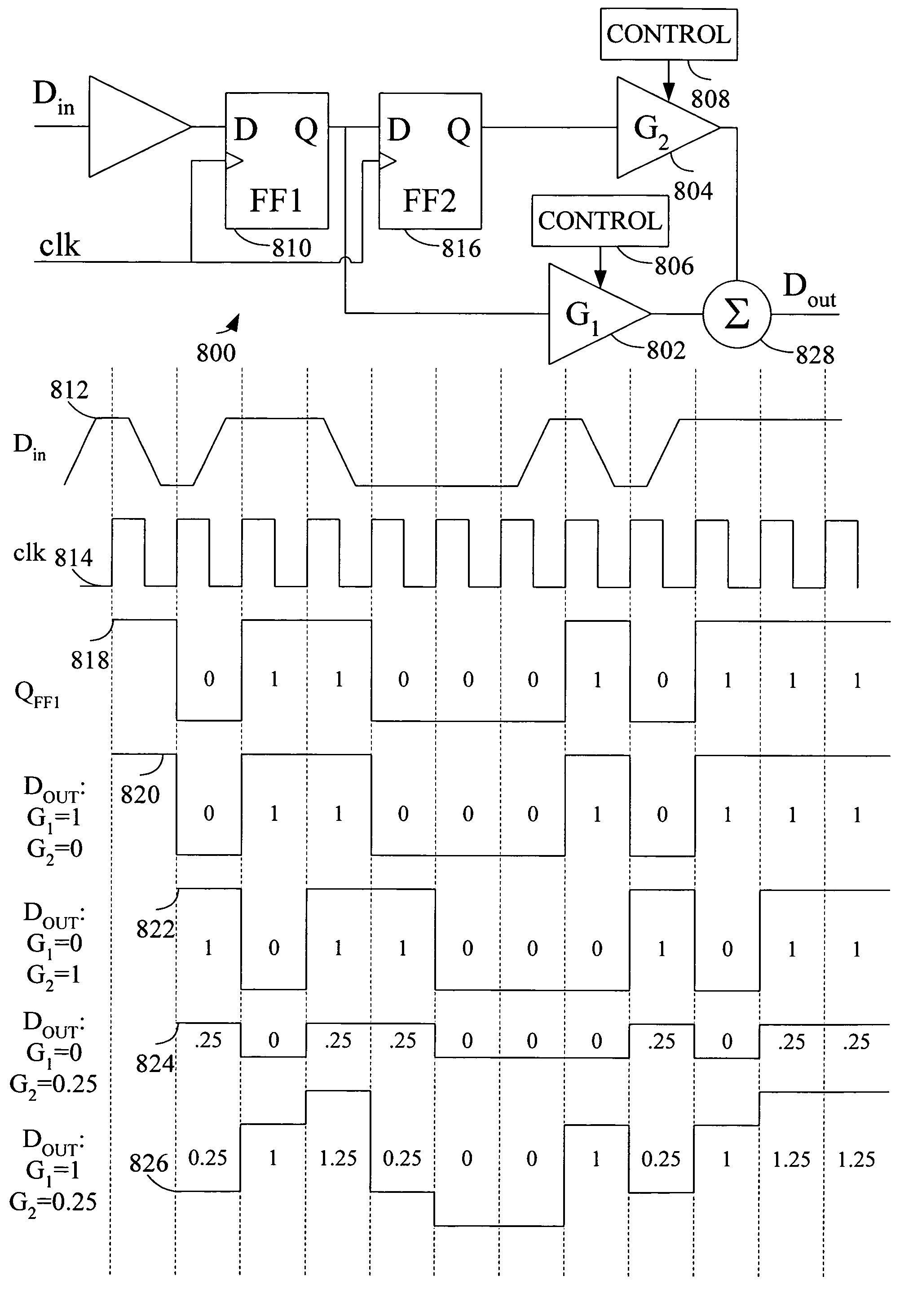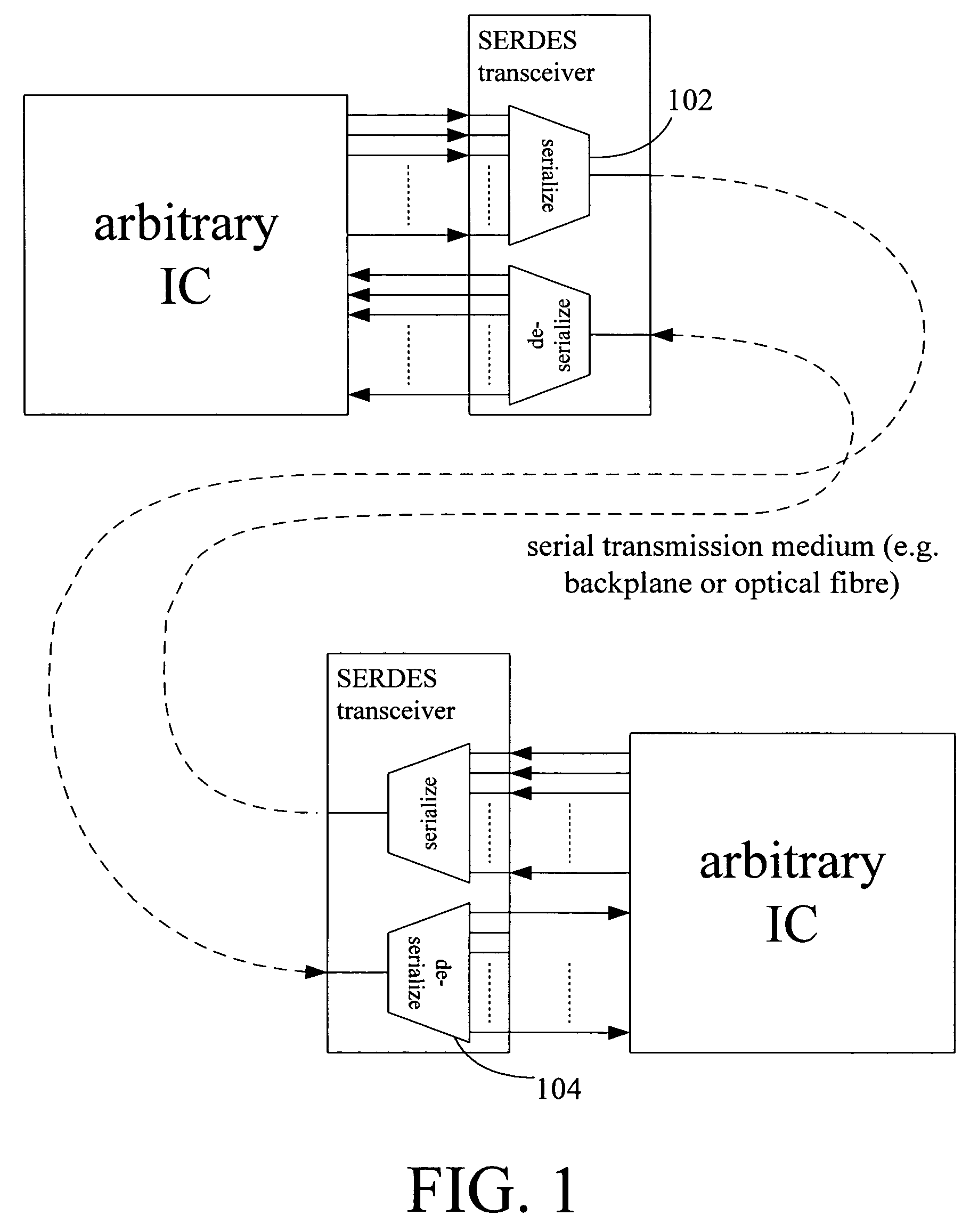Built in self test (BIST) for high-speed serial transceivers
a serial transceiver and built-in self-test technology, applied in the direction of transmission monitoring, line-transmission details, digital transmission, etc., can solve the problems of affecting the quality of the signal carried therein, data rates approaching or even exceeding the physical bandwidth limitations of backplane materials and construction methods, and the conversion to serial data transmission introduces significant signal integrity challenges
- Summary
- Abstract
- Description
- Claims
- Application Information
AI Technical Summary
Benefits of technology
Problems solved by technology
Method used
Image
Examples
Embodiment Construction
[0044]Although particular embodiments are described herein, other embodiments, including embodiments that do not provide all of the benefits and features set forth herein, will be apparent to those of ordinary skill in the art.
[0045]The techniques disclosed herein are applicable to a wide variety of communications circuits with built-in self test (BIST). One embodiment is applicable to the built-in self test of an integrated circuit that has a high-speed serial transmitter incorporating programmable pre-emphasis, and a corresponding receiver incorporating equalization, such transmit / receive pair being designed to operate over a bandwidth-limited transmission medium such as a stripline on a printed circuit board such as a backplane. It will be understood that the transmit / receive pair can be separate devices or can be integrated together.
Digital Filtering
[0046]One of ordinary skill in the art should have at least a cursory understanding of digital filter construction, in particular, ...
PUM
 Login to View More
Login to View More Abstract
Description
Claims
Application Information
 Login to View More
Login to View More - R&D
- Intellectual Property
- Life Sciences
- Materials
- Tech Scout
- Unparalleled Data Quality
- Higher Quality Content
- 60% Fewer Hallucinations
Browse by: Latest US Patents, China's latest patents, Technical Efficacy Thesaurus, Application Domain, Technology Topic, Popular Technical Reports.
© 2025 PatSnap. All rights reserved.Legal|Privacy policy|Modern Slavery Act Transparency Statement|Sitemap|About US| Contact US: help@patsnap.com



